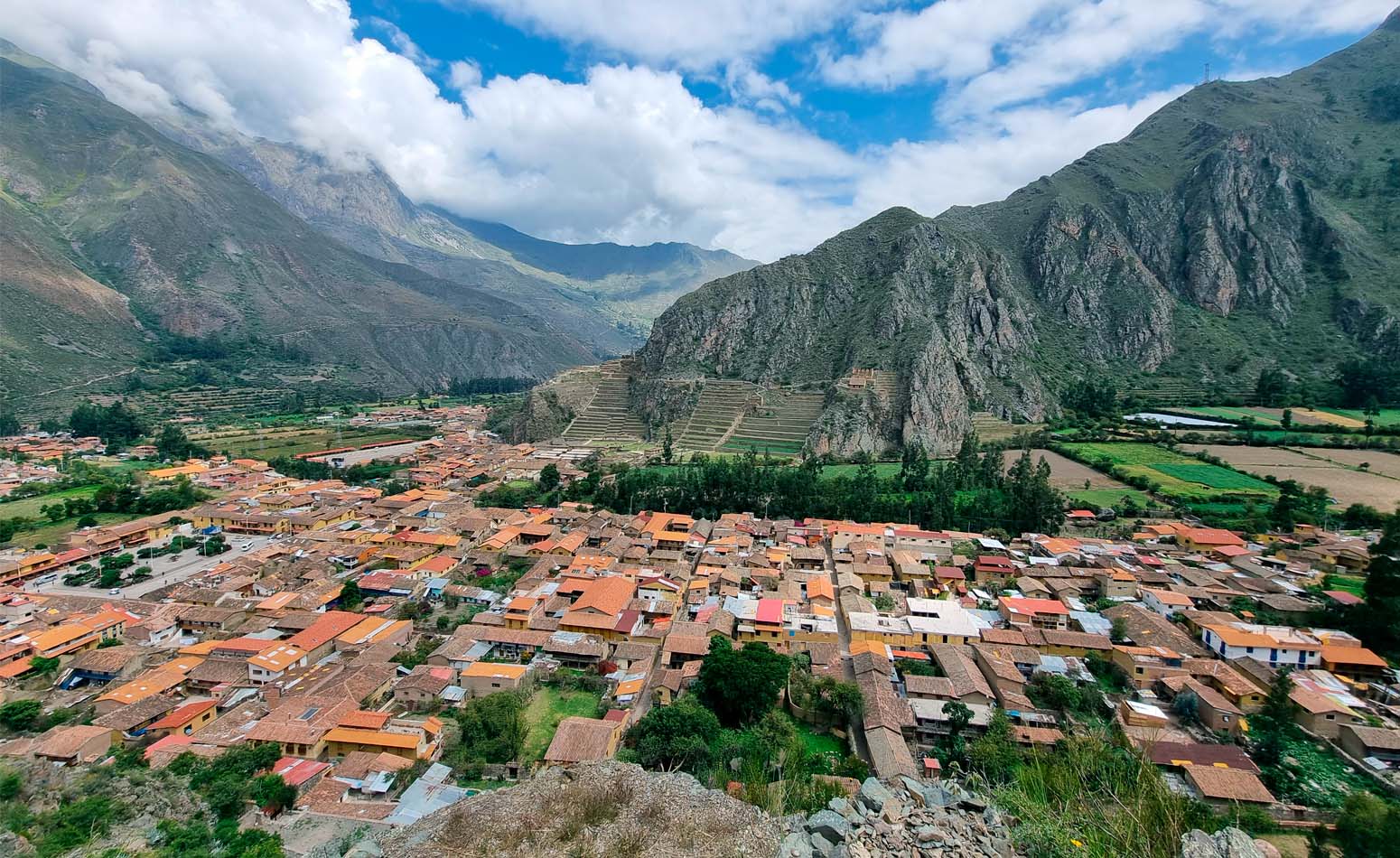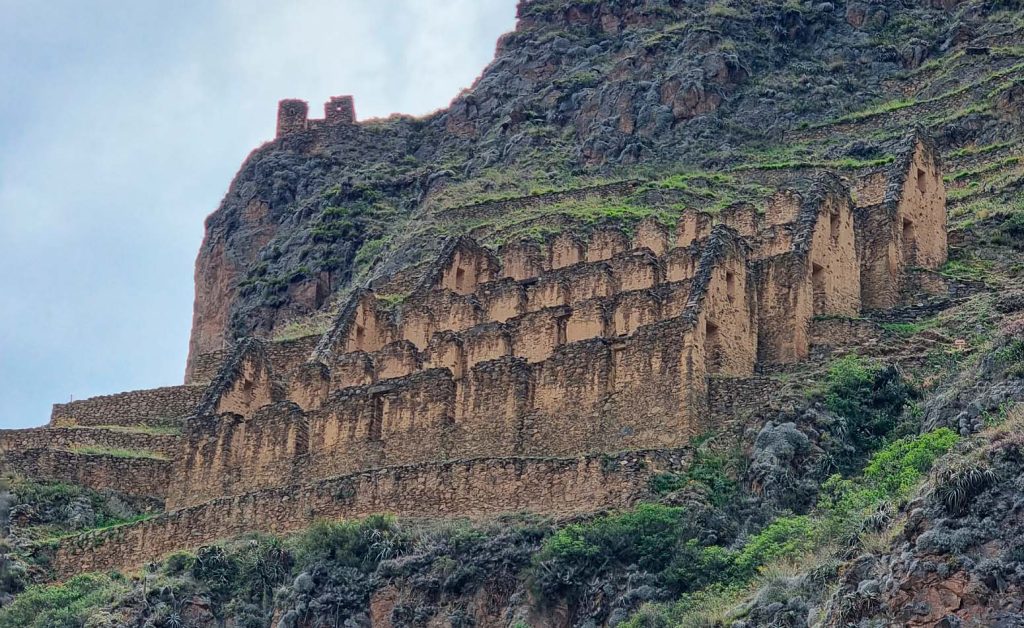Written by Sam Corporations May 12, 2023

Ollantaytambo, located in the district of the same name, in the province of Urubamba, is a city that has one of the largest tourist attractions of Cusco: The Archaeological Complex of Ollantaytambo.
This wonderful archaeological site already existed before the Incas. Many academics believe that the complex had its origin in the Aymara culture. Which extended to the northwest zone of Cusco. Later, during the expansion of Cusco in the early 1400s. The Aymaras sought to build a series of checkpoints to protect this town against the Incas.
A new warrior and a determinated sovereign Inca called Pachacutec reached the conquest of Aymaras and Ollantaytambo. Pachacutec was the one who ordered strengthening of the fortress complex with new buildings and watchtowers that we know today. With the death of Pachacutec, the town passed to the domain of its Panaka (family of Inca sovereign that included wives, uncles, brothers, and numerous sons). During the Spanish conquest, the Inca town was used as a fortress for Manco Inca Yupanqui (the king who was pushed, bit by bit, from Cusco until the jungle’s deep by the Spanish in 1537).
Losing Cusco, he took refuge in Ollantaytambo which came to be a fortress of refuge against the frequent Spanish invasions. But, the Inca fortress destination would be resolved in one great battle between the Incas and the Spanish.
Ollantaytambo Main Square: The Main Square is surrounded by trees and stores that make your stop in town more lively before going to more destinations.
Ollantaytambo Ruins: It is a mandatory stop before reaching Machu Picchu, as the site still retains its ancient Inca urban design and promises to amaze.
The Sun Temple: Once you reach the top after having climbed the 200 steps, you will be able to appreciate an unparalleled view of the Sacred Valley from the Temple of the Sun. The temple is made up of six colossal stone blocks of rectangular shape. These are located at the top of the site and appear as if they had been an unfinished construction. The largest monolith is over two meters wide and about four meters high.
Pinkuylluna: It is a 0.8 km trail that offers spectacular panoramic views where you can disconnect from everything while trekking and/or climbing.
Patacancha Valley: It is a small Quechua village located 45 minutes from Ollantaytambo. It is known for its beautiful textiles and traditional way of life.
Handicraft market: The market is located in the main square and gives visitors the opportunity to take a handicraft or textile souvenir of the area.

This mythical Inca town is the starting point of three important ways to get from Ollantaytambo to Aguas Calientes town. Remember that Aguas Calientes is the closest town to Machu Picchu and hosts the nearest train station to the citadel. Also, the distance between Ollantaytambo and Machu Picchu is 26 km, so depending of the transportation type that you are going to take, your trip can last from 2 hours to 4 days to Aguas Calientes. After, the traveler will have to get a Consettur Bus from Aguas Calientes to the Inca citadel (the bus trip lasts 45 min).
BY TRAIN: The train is the most common, fastest, and mostly considered the best way to get to Machu Picchu (reality, to its modern town named Aguas Calientes). The train to Aguas Calientes is a day trip that lasts 1.5 hrs approximately. The two Cusco train companies are Peru Rail and Inca Rail and offer competitive prices, many departures per day, good quality of service on board. The prices can vary depending on the class of train that the tourist take; Expedition, Vistadome, and the luxury Hiram Bingham are from Peru Rail. The Voyager, the 360º and the Luxury First Class are from Inca Rail. However, the price of the most basic class service is around $70, one way.
BY HIKING THROUGH THE INCA TRAIL.The Inca Trail to visit Machu Picchu is an unparalleled experience because it is the same footpath that the Incas used centuries ago to get to the famous Incas citadel. Feel the same sensation of calm, and beauty that the ancient Inca people felt.
Of course, this route is reserved for those adventurous tourists who want to strive themselves before getting their reward of getting to Machu Picchu. The trekking lasts 3 nights and 4 days. The advantage of doing it is that, during the route, you will find other unique Inca archaeological sites, amazing flora and fauna, and adventure. The disadvantage is that you cannot do it alone, you must always hire a travel agency authorized by the Peruvian government.
In rainy season October to March, temperatures range from 11 to 18°C (52 to 64°F). In dry season April to September, they can range from 5 to 23°C (41 to 73°F).
If you have already been to Cusco and your next stop will be Ollantaytambo, it is very certain that you will not. However, the journey to reach this destination can make you nauseous and dizzy because of the bumpy route at times.
The voltage in Peru is 220v, you will need an adapter if the voltage in your country is 110v. The most common plugs are Type A, Type B and Type C.
The currency used is the Sol and the exchange rate, depending on the dollar, varies daily. To know the current exchange rate, click here.
For consumption and purchases, it depends on the establishment you enter. Smaller and more familiar establishments usually accept only cash. While, if you are buying your train ticket, we accept all means of payment: credit cards, debit cards, cash, transfers, among others.
The temperature can reach up to 5°C/41°F in the dry season, remember to bring wool socks, gloves, hat and coats if you go on those dates.
Quality
Contact our travel advisors to plan the most complete trip of your life.
Simplified ease of communication, text us on WhatsApp, email or call us.
Our guides are local and have vast knowledge in Peruvian culture and history.
100% local company. Development and environmental sustainability
Our groups never exceed 10 people, giving you an unforgettable experience
Discover an exceptional journey where perfection meets adventure.